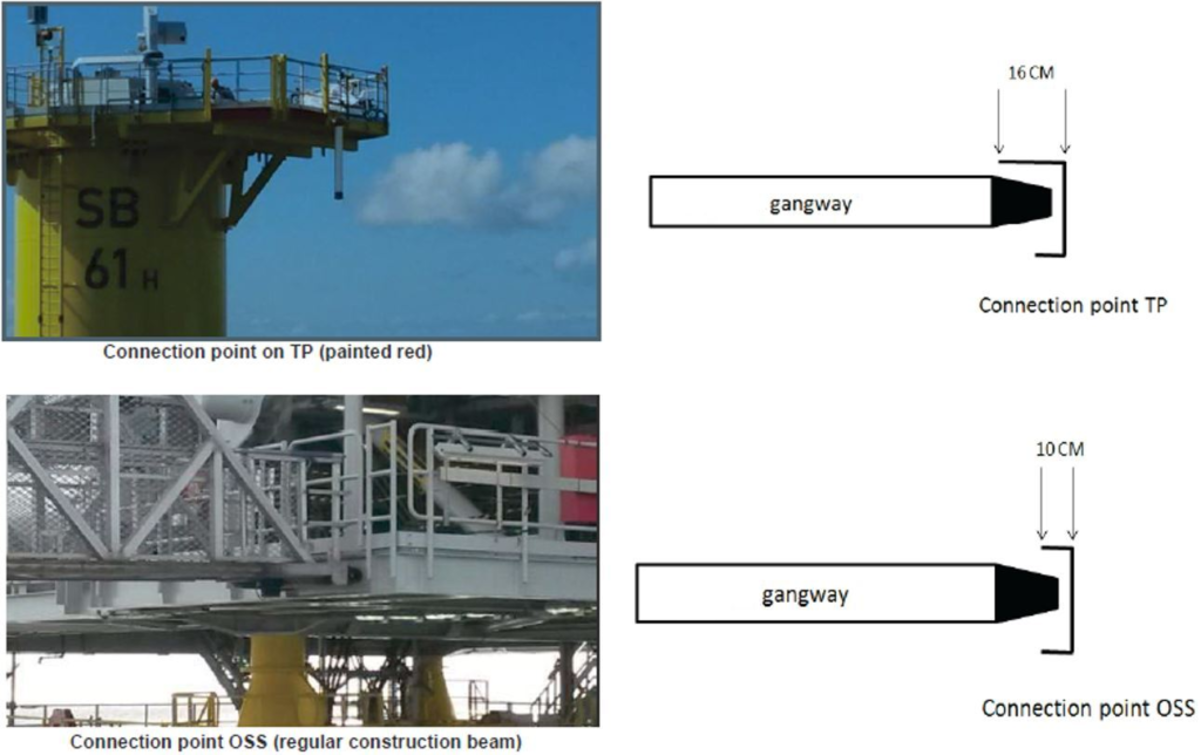Uncontrolled release of walk to work gangway
- Safety Flash
- Published on 18 April 2019
- Generated on 20 November 2025
- IMCA SF 07/19
- 2 minute read
Jump to:
A walk-to-work (W2W) gangway system broke loose from its connection point.
What happened?
The incident occurred during transfer of four persons to an offshore wind installation. The first person got the green light (operated manually) to transfer across and did so without problems. After the first person had transferred, the system moved up and down and slipped upwards from its push-on point and came into contact with a floor grating that came loose, resulting in minor damage. The transfer was aborted, and further transfers were done using a crew transfer vessel (CTV).
Our member’s investigation noted that:
- The gangway system was tested before the incident and it was observed that the system seemed to be reacting slower than normal, but as it performed well under tests earlier that day it was agreed between operator and captain to start operations.
- There were slight differences in the push-on point design on this installation (a substation) than on the turbine towers (see illustration).
- The weather and sea state at the time was within the working limits for the gangway system (actual 1.5 m and 15 knots versus design 3m Hs & 30 knots wind).

What went wrong? What were the causes?
Investigation of the software control for the gangway system Active Motion Compensation (AMC) revealed that the performance for boom motion was not optimal. Corrections were made to the software parameters.
The primary cause was found to be that due to reduced accuracy of the AMC, the vertical force acting on the connection point led to connection failure.
What actions were taken? What lessons were learned?
Corrective steps to prevent future incidents:
- AMC performance to be verified during annual inspection.
- Before connecting the gangway, position the gangway approximately 1 m from connection point, visually verify that AMC is stable and that the control error is within reasonable limits.
- Verify that the connection point is designed to fit the gangway with respect to shape and load.
Related Safety Flashes
-
IMCA SF 02/18
23 January 2018
-
-
IMCA SF 19/15
23 November 2015
-
IMCA SF 06/14
16 April 2014
-
IMCA SF 03/11
1 April 2011
IMCA Safety Flashes summarise key safety matters and incidents, allowing lessons to be more easily learnt for the benefit of the entire offshore industry.
The effectiveness of the IMCA Safety Flash system depends on the industry sharing information and so avoiding repeat incidents. Incidents are classified according to IOGP's Life Saving Rules.
All information is anonymised or sanitised, as appropriate, and warnings for graphic content included where possible.
IMCA makes every effort to ensure both the accuracy and reliability of the information shared, but is not be liable for any guidance and/or recommendation and/or statement herein contained.
The information contained in this document does not fulfil or replace any individual's or Member's legal, regulatory or other duties or obligations in respect of their operations. Individuals and Members remain solely responsible for the safe, lawful and proper conduct of their operations.
Share your safety incidents with IMCA online. Sign-up to receive Safety Flashes straight to your email.